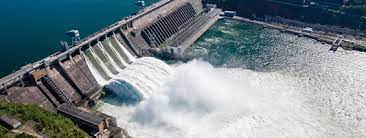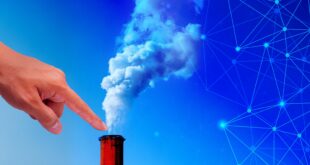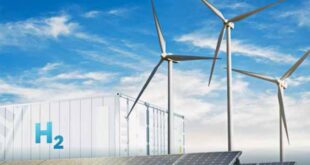In addition to the most popular renewable energy sources – solar and wind power – several countries are investing in the development of their hydropower capacity as they look to diversify their energy mix in pursuit of greater energy security. The hydropower market is valued at an estimated $251.58 billion this year and is expected to reach a value of $356.36 billion by 2031, growing at a CAGR of 5.1 percent between 2024 and 2031. Several traditional hydropower markets will continue to grow, while other new markets will emerge as countries pursue alternative green energy projects.
When it comes to pumped storage hydropower, China is leading the global market. China’s installed capacity of pumped storage hydropower reached 50.94 million kW by the end of last year, the highest capacity globally. The approved project pipeline stood at an additional 179 million kW at the end of 2023. PSH projects include two water reservoirs situated at different heights, which can store or generate power as water moves between the two, passing through a turbine. This process can help alter the power load on the grid, making it a more reliable energy source than some other renewable options.
An estimated 49 new PSH stations were approved for development in China last year, with a combined capacity of 63.4 million kW. Zhao Zenghai, the deputy head of China Renewable Energy Engineering Institute, stated that PSH is “expected to continue growing steadily. This year, the installed capacity is anticipated to reach 57 million kW. Looking ahead, the industry will focus on demand-driven development, enhancing project layouts, steadily advancing electricity price reforms, and improving industry chain coordination to drive high-quality development.”
Sweden is another well-established hydropower market, with the energy source supplying around 45 percent of the country’s electricity generation. This month, the London-based firm Downing Renewables and Infrastructure Trust Plc announced plans to invest $6.6 million in the purchase of three hydropower plants in Sweden, with an anticipated combined capacity of 7.5 GWh after upgrades. DORE will buy the Hagby, Gyttorp, and Hammarby facilities on the Norasjön River, as well as their associated storage reservoirs. DORE purchased five Swedish hydropower plants earlier this year, with a collective value of around $6.7 million. The new acquisition will bring DORE’s hydropower portfolio to 37 assets and an annual average production capacity of around 222 GWh.
In 2023, Vattenfall, Sweden’s largest hydroelectric company, announced plans to increase the capacity of its hydro plants by 720 MW through the rollout of four projects in the northern and central parts of Sweden. These projects include the modernization of the idle unit at the Lule River-based Harsprånget plant, increasing the runoff at the Lule River-based Porjus plant, modernizing the Juktan plant, and the construction of a new unit at the Lule River-based Messaure plant, all to be completed by 2032.
Meanwhile, in Canada, demand for clean electricity through hydropower projects is soaring, and energy companies are battling to maintain their output. One hydropower project, southwest of Montreal, produces enough energy to power nearly 400,000 homes, and there are several other hydropower operations across Quebec. The province is a major hydropower hub, with 61 generating stations making it a major exporter of clean electricity. However, energy companies have been increasingly battling with droughts in recent years, as they try to keep production levels high to meet the rising demand for clean electricity.
The public utility’s reservoir levels fell below average last year due to widespread droughts in Canada, and exports to the U.S. from Canada decreased by almost 25 percent in 2023. Meanwhile the firm B.C. Hydro was forced to import additional power from the U.S. due to the lower hydropower production levels. This has raised concerns about the future of hydropower production in the region, as climate change is expected to have a significant impact on future weather patterns.
While several countries are afraid of the negative impact of droughts on their hydropower production at conventional projects, some are coming up with innovative ways to develop their hydropower capacity. Investors are increasingly looking to smaller-scale hydropower projects to overcome the financial barriers to accessing hydropower. These can be developed in rural communities and rely largely on the “run of the river” or the natural flow of water rather than a dam. While this means that energy production can fluctuate depending on the season, it has a reduced impact on ecosystems in the region.
Digitalization is also greatly improving hydropower projects worldwide. The collection and analysis of real-world data from production sites can be used to inform “intelligent” systems of control to optimize operations. Several companies are now looking to tidal power to enhance hydropower production, using the movement of the tide to produce electricity. One project already up and running is the NREL tidal power project on New York City’s East River. It consists of three 35kW turbines, which were submerged in the river in 2020. The project already broke the US record for marine energy production and if data collection from the project is as expected, the process could be rolled out at the commercial level.

 Iran Energy News Oil, Gas, Petrochemical and Energy Field Specialized Channel
Iran Energy News Oil, Gas, Petrochemical and Energy Field Specialized Channel



